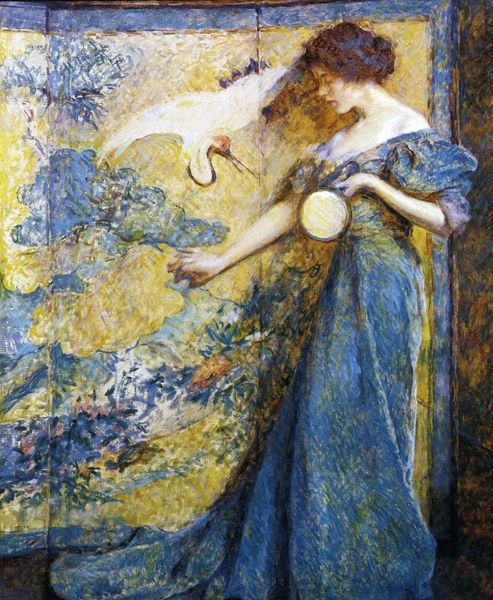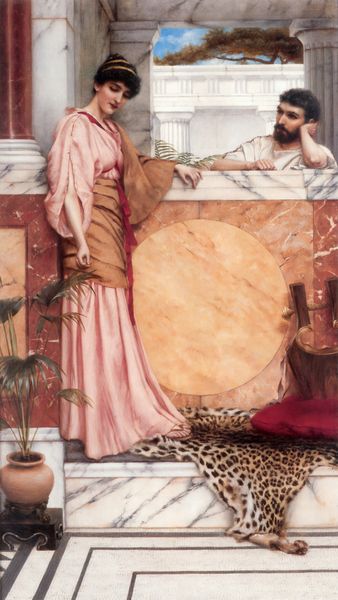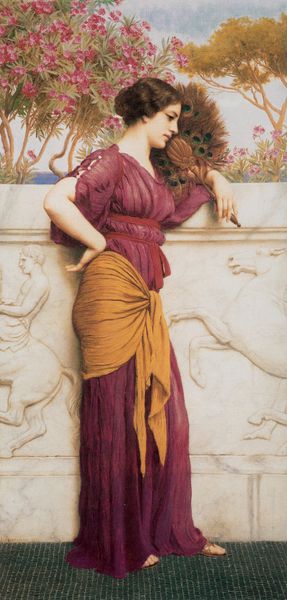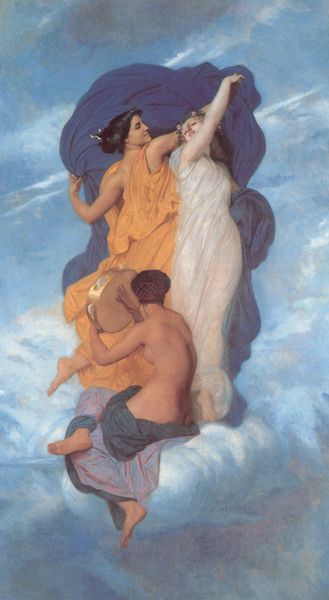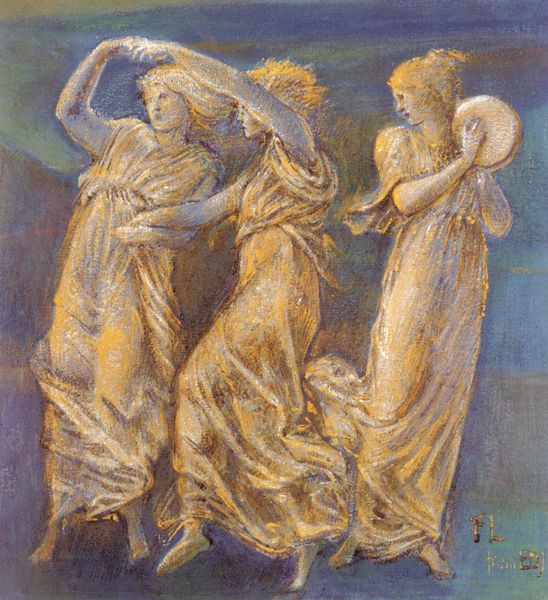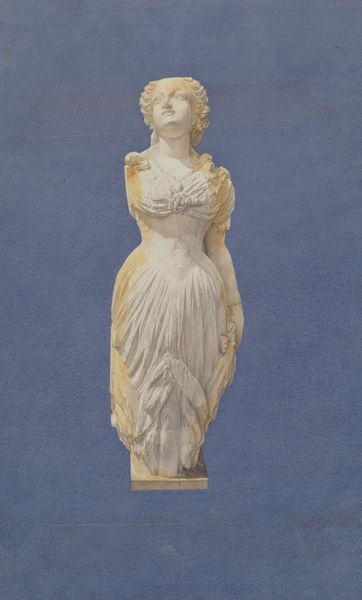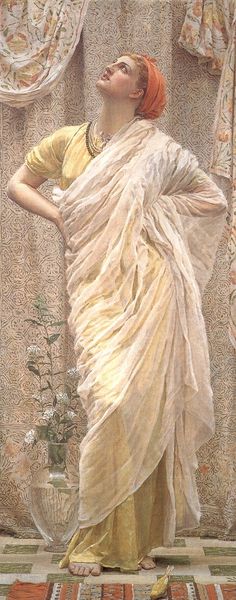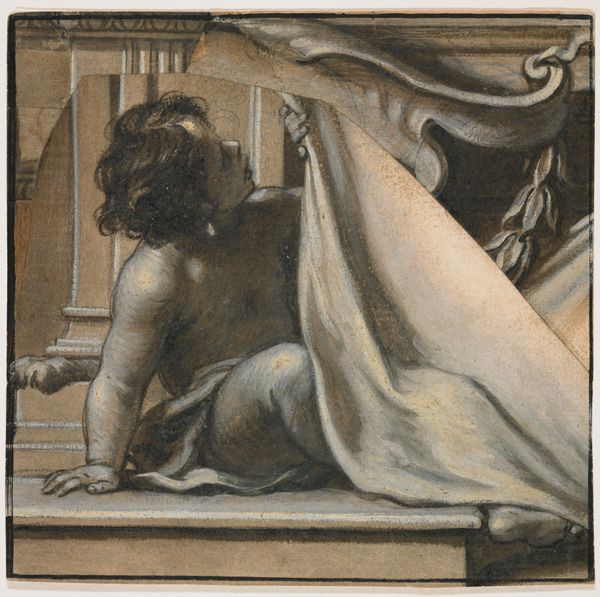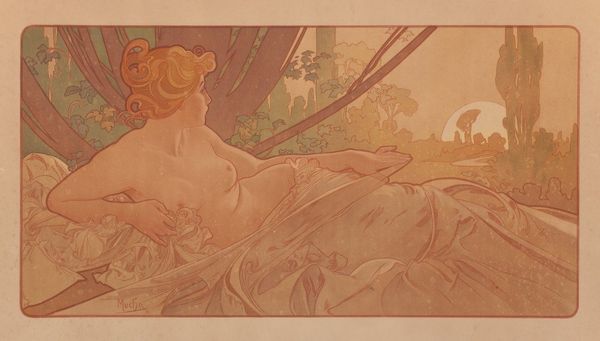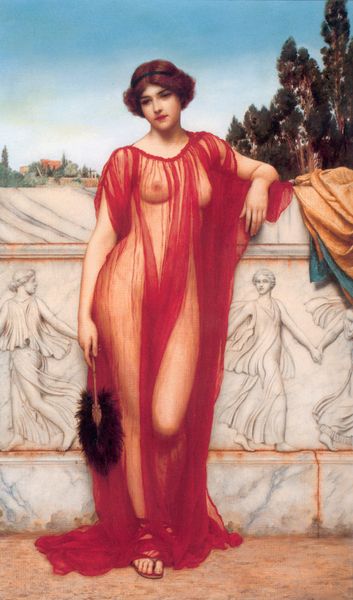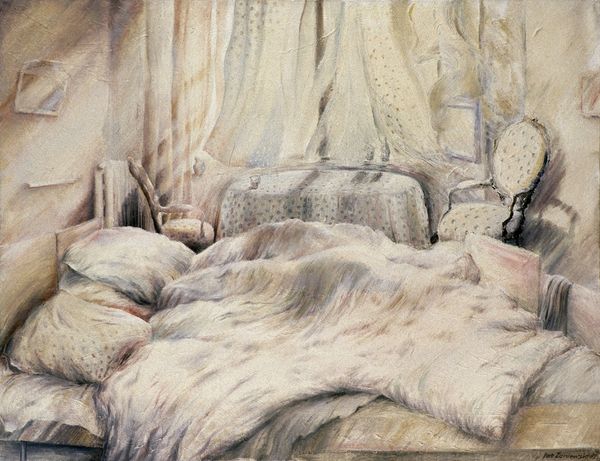
painting, watercolor
#
portrait
#
gouache
#
painting
#
watercolor
#
aesthetic-movement
#
academic-art
#
lady
#
nude
#
watercolor
Dimensions: 63.5 x 119.5 cm
Copyright: Public domain
Editor: This is Albert Joseph Moore's "Silver," painted in 1886, using watercolor and gouache. There’s such a tranquil mood to it, and this almost ethereal sense created by the lady's pose and flowing gown. What do you see in this piece? Curator: This image, on the surface, seems to simply portray beauty, tranquility. But the Aesthetic Movement, to which Moore belonged, wasn't created in a vacuum. Can we really divorce these portrayals of idealized women from the social and political realities of Victorian England? Consider the restrictions placed upon women during that era, particularly in the domestic sphere. Editor: So, the art wasn’t just about surface-level beauty, but possibly…resistance? Curator: It's a negotiation, isn't it? These images weren’t challenging power directly, but rather carving out a space for beauty and contemplation *within* a patriarchal structure. Moore, along with many of his contemporaries, frequently portrayed women from mythology, or otherwise located them outside of their immediate time period. It let them show things such as this gentle, sensuous semi-nudity which might be risky to show on Victorian-era English ladies. How does the title, "Silver", interact with that theme for you? Editor: That's a good point. Maybe "Silver" emphasizes this cool, distant, untouchable quality…a barrier of beauty? The female figure becomes almost an object, right? Curator: Precisely. It's about power dynamics, visibility, and the gaze. Are these images empowering women, or further objectifying them? It is complicated. But those complicated and contradictory readings also feel vital, because aren't we still negotiating similar challenges in the way women's bodies are presented even today? Editor: That really gives me a new way of thinking about how art from the past speaks to current issues of representation. Curator: Exactly, understanding these dialogues helps us to deconstruct the past and interrogate the present.
Comments
No comments
Be the first to comment and join the conversation on the ultimate creative platform.
